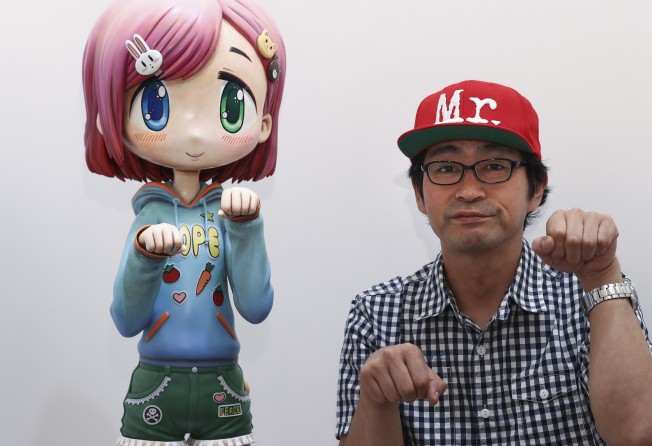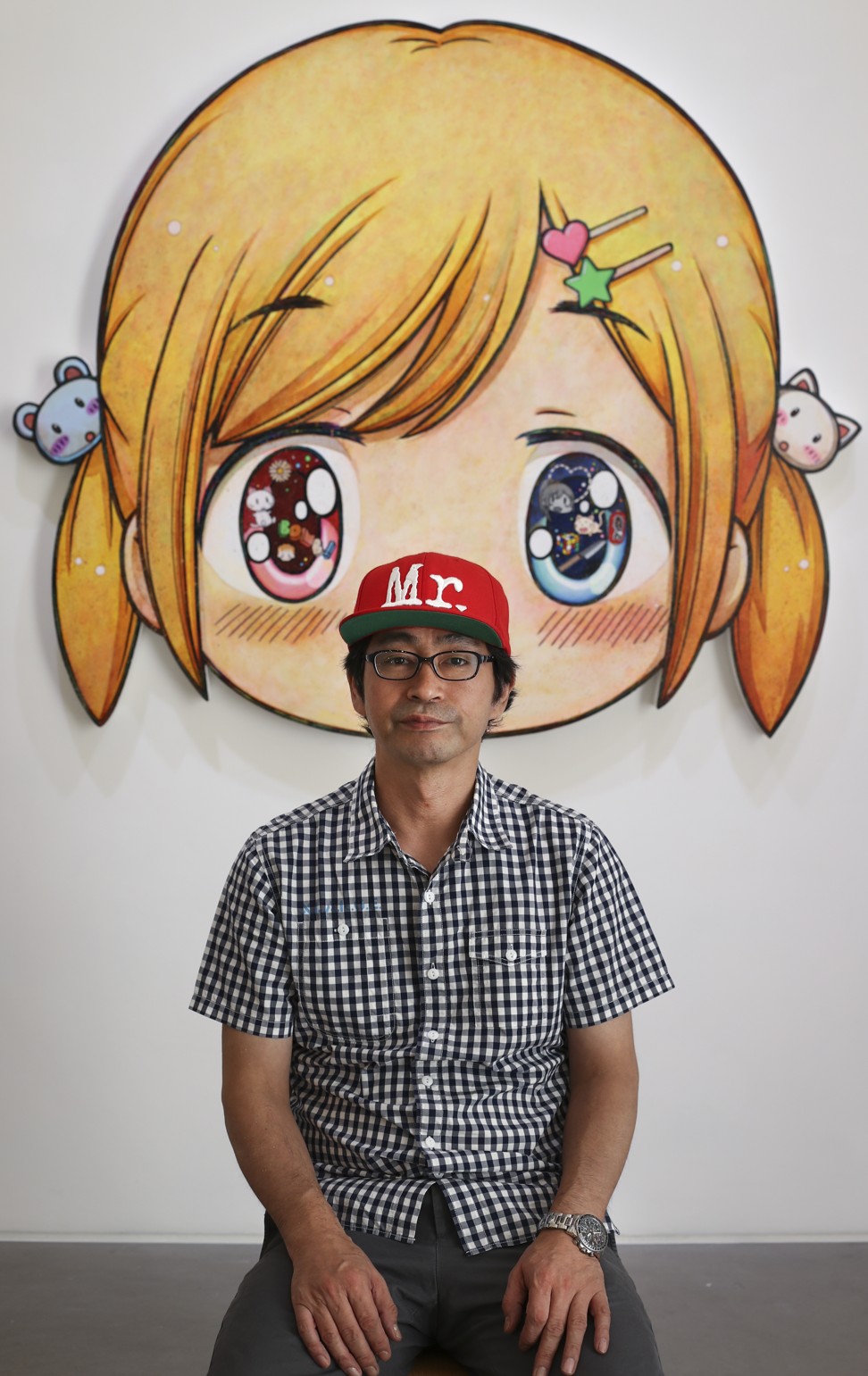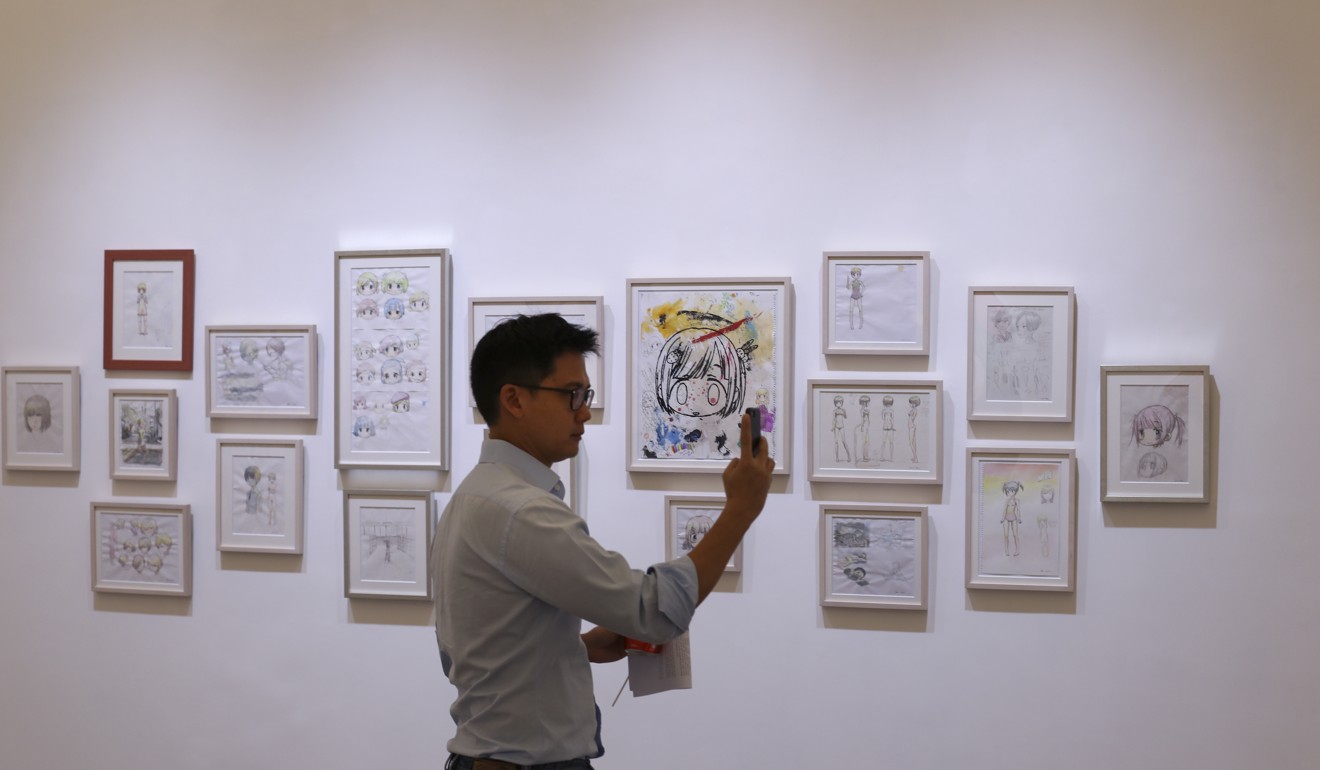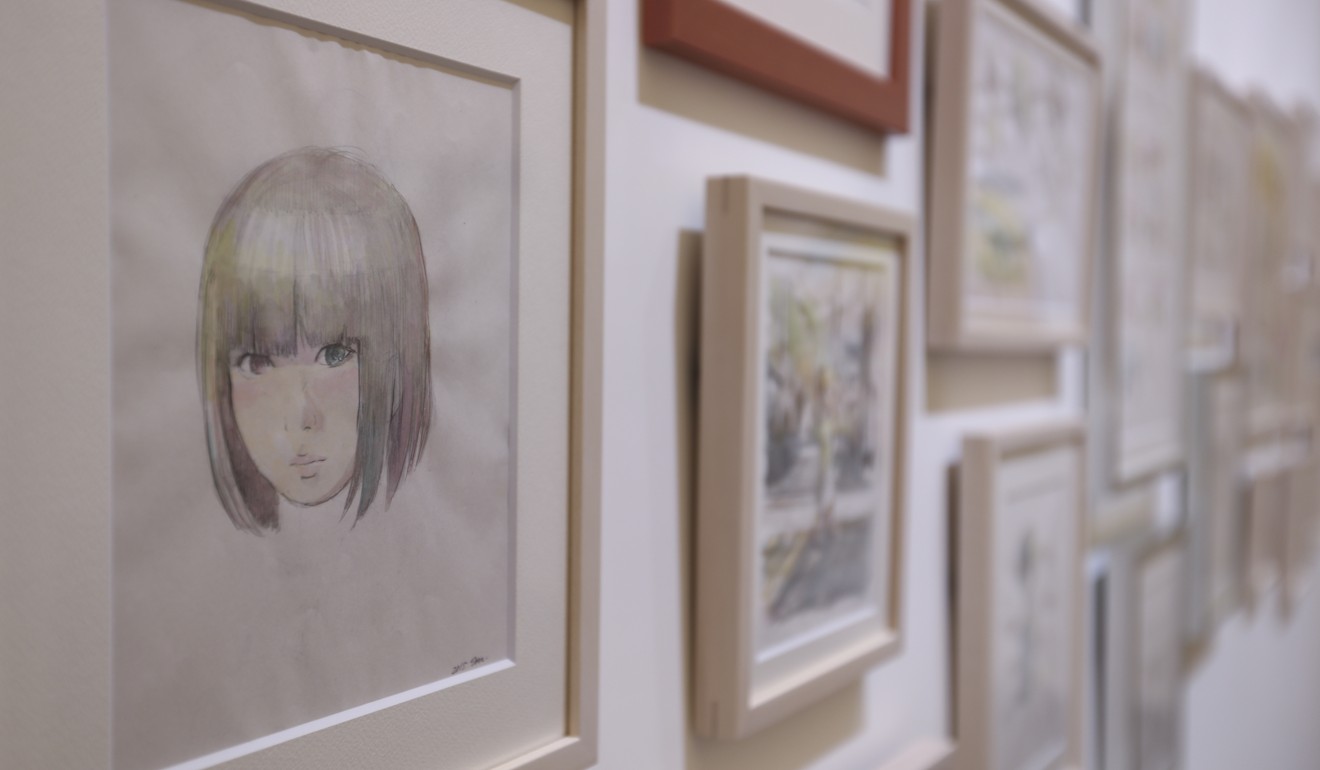The otherworldly appeal of Japanese artist Mr. and his desexualised depictions of cute young girls
Doe-eyed, prepubescent girls are still his main subject matter, but the art Mr. produces these days is joyful and innocent; even his work inspired by 2011 nuclear disaster is meant not to be ‘too awful’, he says of Hong Kong show

The anime-inspired work of the Japanese artist known as Mr. has become a lot more acceptable these days.
Gone are the hyper-sexualised images of young girls flashing their white cotton underwear. Gone, too, are the autobiographical images of priapic older men in their midst. The main subject matter of his art is still the doe-eyed, prepubescent girl, but she has become a sanitised cultural trope rather than a masturbatory fantasy.
The self-confessed “lolicon” – as those with a Lolita complex are known – says he realised about 10 years ago that the world frowned on the blatant expression of lust and unrestrained objectification of women in the two-dimensional, fictitious universe that he has constructed.
“Being brought up in Japanese society, I was oblivious to how the world thought about our portrayal of women,” he says at the opening of an exhibition of his work in Hong Kong.

These days, he tells people that what he expresses is more appropriately referred to as moe – a Japanese term suggesting a platonic, warm affection for the cartoon girls.
Born in 1969, Masakatsu Iwamoto adopted the name Mr. when he was 25 after his baseball hero Shigeo Nagashima, also known as Mr Baseball. That year, the young man who privately indulged in drawing anime characters on shopping receipts became Takashi Murakami’s studio assistant and part of the Japanese superstar artist’s “superflat” movement that merges the ukiyo-e tradition of printmaking and painting depicting ordinary people at leisure with the glossy, anime fantasy world beloved of the otaku community (geeks lacking in social skills who feel more comfortable interacting with a computer avatar in a bikini than a real woman.)

Mr., as he insists on being called, comes across as the genuine otaku compared with Murakami, who will happily talk at length about his artistic theories. In the interview, he is all terse comments with long pauses in between.
But his frankness about his fantasies – which the bachelor insists he has never acted out in real life – and the childlike glee when he agrees to pose, catlike, with a sculpture of a young girl in Hong Kong, convey an otherworldliness that may explain why the art world is so enchanted by him, or, at least, willing to see his dark fantasies as a mirror into something bigger.
In May 2016, his Helloooo There ! (2008) – a painting of a young French maid bent over at a table with her underwear and stockings exposed – sold at a Christie’s auction in Hong Kong for HK$2.2 million, including buyer’s premium.
The desexualising of his art in recent years also coincided with the 2011 earthquake and tsunami that led to the meltdown of reactors at the Fukushima nuclear power plant in northeast Japan – an apocalyptic event that he says will always haunt him. He wants his art to reflect the sense of surrealism and total chaos that the country felt on March 11, 2011, he says, though he doesn’t want to “make it too awful”.

Of the works in his Hong Kong exhibition, a new painting called Floating in the Air in the Vicinity of a Convenience Store (2017) is indeed surreal and chaotic. It shows three floating cartoon heads of smiling young girls against a background filled with familiar, everyday consumer products. The effect is an explosion of kawaii (cuteness) that is as irresistibly joyful as Pharrell Williams’ toe-tapping song Happy. (Incidentally, Williams asked Mr. and Murakami to produce the music video for his 2014 single It Girl – which features an animation of Williams diving in and out of an anime sea of well-endowed, scantily dressed young girls.)
With the world as fascinated as ever with otaku and Japanese anime, how happy is Mr. with the assumption that he is somehow representative of the Japanese psyche?
“I had no intention of making my private world public. It just sort of happened,” he says.
“Mr. - Floating in the Air in the Vicinity of a Convenience Store”, Lehmann Maupin, 407 Pedder Building, 12 Pedder Street, Central, Tue-Fri 10am-7pm, Sat 11am-7pm. Until October 21